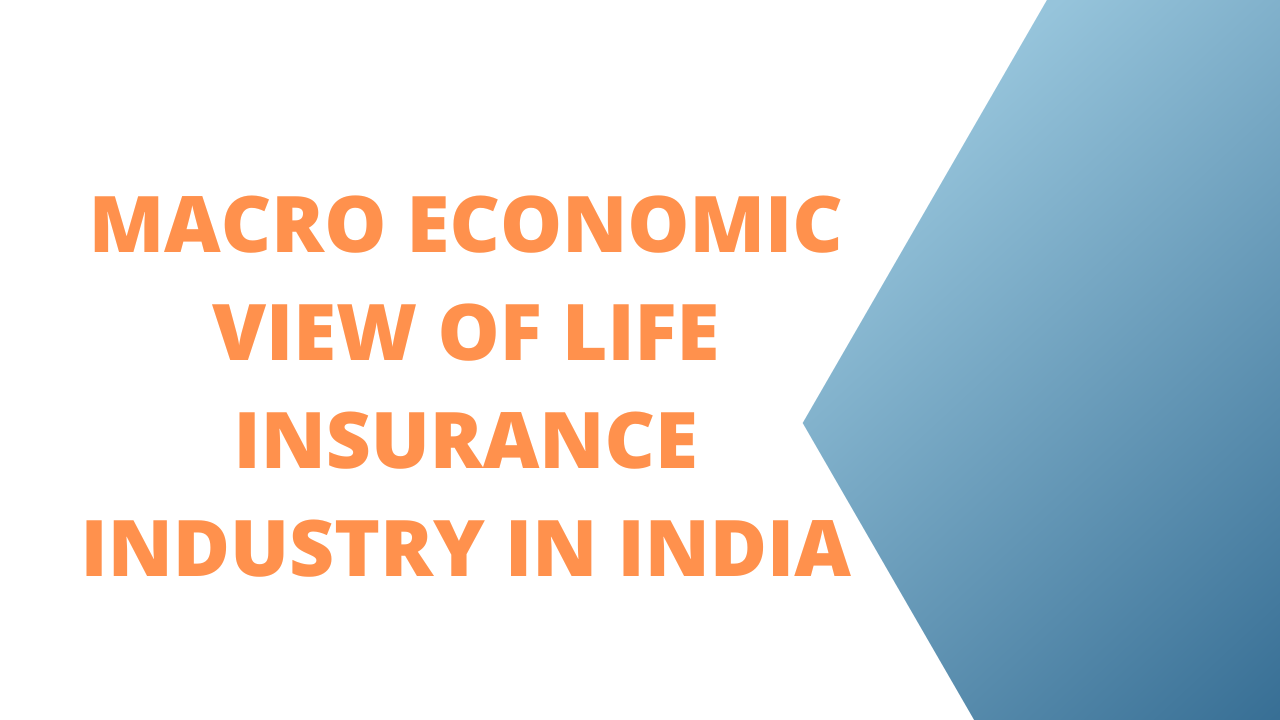Today, the Indian life insurance industry operates under the regulatory oversight of the Insurance Regulatory and Development Authority of India (IRDAI), which ensures fair practices, consumer protection, and financial stability within the sector. The industry offers a diverse range of insurance products, including term plans, endowment plans, unit-linked insurance plans (ULIPs), and pension plans, catering to varying customer needs and preferences.
Market Size and Growth Trends:
The Indian life insurance industry has experienced remarkable growth over the past few decades. The liberalization of the sector in 1999 opened the doors for private insurers to enter the market, leading to increased competition and product innovation. As a result, the industry witnessed accelerated expansion in terms of both market size and policyholder base.
Key factors contributing to the growth of the Indian life insurance industry include:
- Rising Awareness: Growing awareness about financial protection and the importance of life insurance has led to increased adoption among Indian households.
- Demographic Dividend: India’s large and youthful population presents a significant market opportunity, as individuals seek insurance coverage for their families’ financial security.
- Economic Growth: The country’s robust economic growth has positively influenced disposable incomes, enabling more people to consider insurance as a means of wealth creation and risk mitigation.
- Regulatory Support: IRDAI’s regulatory initiatives, such as customer-centric guidelines and product standardization, have fostered consumer confidence in the industry.
- Technology Adoption: The integration of technology in insurance distribution, servicing, and underwriting has improved accessibility and customer experience.
Regulatory Environment:
The life insurance industry in India operates within a well-defined regulatory framework set by the Insurance Regulatory and Development Authority of India (IRDAI). The IRDAI is an autonomous statutory body established in 1999 under the Insurance Regulatory and Development Authority Act, 1999. Its primary objective is to regulate, promote, and ensure the orderly growth of the insurance industry while safeguarding the interests of policyholders.
Key aspects of the regulatory environment for the life insurance industry in India include:
- Licensing and Registration: IRDAI is responsible for granting licenses to insurance companies to operate in the country. Life insurance companies must meet specific capital requirements and demonstrate the ability to conduct business in a financially sound manner.
- Product Approval: IRDAI reviews and approves the insurance products offered by insurers to ensure compliance with regulatory norms and protect consumer interests. The regulator ensures that products are fair, transparent, and meet the needs of policyholders.
- Solvency and Financial Regulations: IRDAI establishes solvency requirements that insurance companies must adhere to. These regulations ensure that insurers maintain sufficient capital and reserves to cover their obligations and maintain financial stability.
- Market Conduct Regulations: IRDAI sets guidelines for fair business practices, transparency in policy terms, and grievance redressal mechanisms to protect the interests of policyholders and promote ethical conduct within the industry.
- Distribution Channels: The regulator oversees various distribution channels used by insurers, such as insurance agents, bancassurance, brokers, and digital platforms. It ensures that intermediaries meet professional standards and maintain transparency in their dealings.
Competitive Landscape:
The Indian life insurance industry features both public and private sector players. The competitive landscape has evolved significantly since the opening up of the sector to private players in 1999. While the Life Insurance Corporation of India (LIC) remains the dominant public sector insurer, private insurers have gained substantial market share.
Key points about the competitive landscape in the Indian life insurance industry:
- Dominance of LIC: LIC, a state-owned insurer, has historically held a significant market share in the life insurance sector. Its extensive reach, brand presence, and diverse product offerings have contributed to its market leadership.
- Entry of Private Players: The liberalization of the industry in 1999 led to the entry of several private life insurance companies. These private insurers have introduced innovative products, advanced distribution channels, and increased competition in the market.
- Market Share Distribution: While LIC continues to lead the market, private insurers collectively hold a substantial share. Some private insurers have achieved commendable growth and market penetration, challenging LIC’s dominance.
- Product Innovation: Private insurers have been instrumental in introducing new and customized insurance products to cater to the evolving needs of consumers. Their innovative offerings often include unit-linked plans, health-linked policies, and retirement-focused products.
- Distribution Strategies: Insurance companies utilize various distribution channels to reach customers effectively. Besides traditional agency networks, bancassurance tie-ups, direct selling, and online platforms have gained prominence.
Insurance Products and Distribution Channels:
Insurance Products:
The Indian life insurance industry offers a wide range of insurance products to meet the diverse needs of consumers. Some of the key life insurance products available in the Indian market include:
- Term Insurance: Pure protection plans that provide a high sum assured at an affordable premium. They offer financial security to the insured’s family in the event of the policyholder’s untimely demise.
- Endowment Plans: These are savings-cum-protection plans that provide both death benefit and maturity benefit. If the policyholder survives the policy term, they receive a lump sum payout at the end of the policy tenure.
- Unit-Linked Insurance Plans (ULIPs): Investment-linked insurance products that allow policyholders to invest in various market-linked funds. ULIPs offer both life coverage and the potential for wealth creation through investment growth.
- Whole Life Insurance: Policies that provide life coverage for the entire lifetime of the insured, along with a death benefit to the beneficiaries upon the policyholder’s demise.
- Money-Back Plans: These plans offer periodic payouts during the policy tenure, providing liquidity at regular intervals while also offering life coverage.
Distribution Channels:
Insurance companies in India utilize multiple distribution channels to reach potential customers and make insurance products accessible to a broader audience. Some of the primary distribution channels include:
- Insurance Agents: Traditional insurance agents play a crucial role in marketing and selling life insurance policies. They provide personalized advice and assistance to customers.
- Bancassurance: Collaboration with banks allows insurers to sell insurance products through the bank’s branches, leveraging the bank’s customer base for distribution.
- Brokers: Registered insurance brokers act as intermediaries between the customer and various insurance companies, offering a range of insurance products from different insurers.
- Direct Sales: Insurance companies also promote their products through direct selling, where customers can buy policies directly from the company through their website or call centers.
- Online Platforms: The growth of digitalization has led to the emergence of online insurance aggregators and insurers’ official websites, offering customers a convenient way to compare and purchase policies online.
Challenges and Opportunities:
Challenges:
- Low Insurance Penetration: Despite significant growth, insurance penetration in India remains relatively low, especially in rural and semi-urban areas.
- Lack of Awareness: Many people in India are still unaware of the importance of life insurance and the benefits it offers, leading to underinsurance.
- Regulatory Compliance: Complying with the evolving regulatory landscape and meeting the IRDAI’s requirements can be a challenge for insurers.
- Persistency: Ensuring policy persistency (policyholders continuing policies without lapsing) is a challenge, as many policyholders surrender policies prematurely.
- Digital Divide: While digitization has improved insurance access, the digital divide remains an obstacle in reaching underserved segments.
Opportunities:
- Rising Income Levels: Increasing disposable incomes and a growing middle class create opportunities for insurers to tap into a larger customer base.
- Untapped Markets: Rural and semi-urban areas present untapped markets where insurers can expand their reach and offer tailored products.
- Product Innovation: The industry has the opportunity to innovate and develop products that address specific customer needs and offer unique value propositions.
- Technology Adoption: Leveraging technology for customer acquisition, policy servicing, and claim settlement can enhance efficiency and customer experience.
- Financial Inclusion: Insurance can play a crucial role in promoting financial inclusion, especially through targeted policies for underserved segments.
FAQs about the Indian Life Insurance Industry:
- Is life insurance mandatory in India?
- Life insurance is not mandatory for individuals in India. However, it is highly recommended to secure financial protection for one’s family and dependents in the event of the policyholder’s demise.
- What factors should I consider while choosing a life insurance policy?
- When choosing a life insurance policy, consider factors such as the policy’s coverage amount, premium affordability, policy term, type of insurance product, and the insurer’s reputation and claim settlement record.
- Can I switch my life insurance policy from one insurer to another?
- Yes, it is possible to switch your life insurance policy from one insurer to another through a process called “policy portability.” However, it is essential to carefully evaluate the new policy’s terms, coverage, and benefits before making the switch.
Conclusion:
The Indian life insurance industry has witnessed remarkable growth and transformation over the years, driven by regulatory reforms, increased awareness, and the entry of private players. With a diverse range of insurance products and distribution channels, the industry has become more accessible to a broader segment of the population.
Read More:
- Post Office Savings Account: Benefits and How to Open an Account
- 7 Simple Ways to Start Saving for a Bright Future
- How can I grow my savings fast?
- Saving Account: Types, Interest rates, and eligibility criteria




